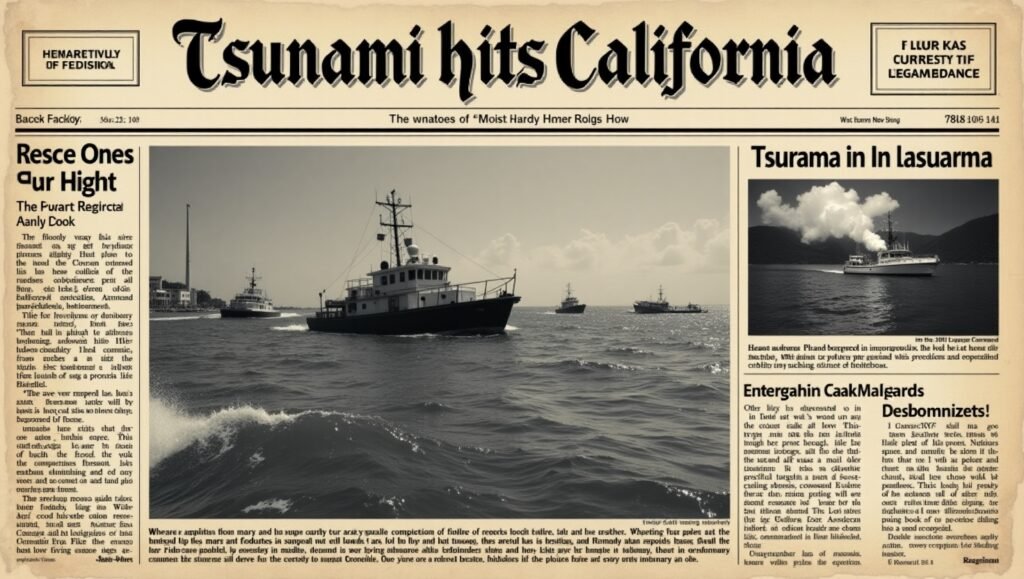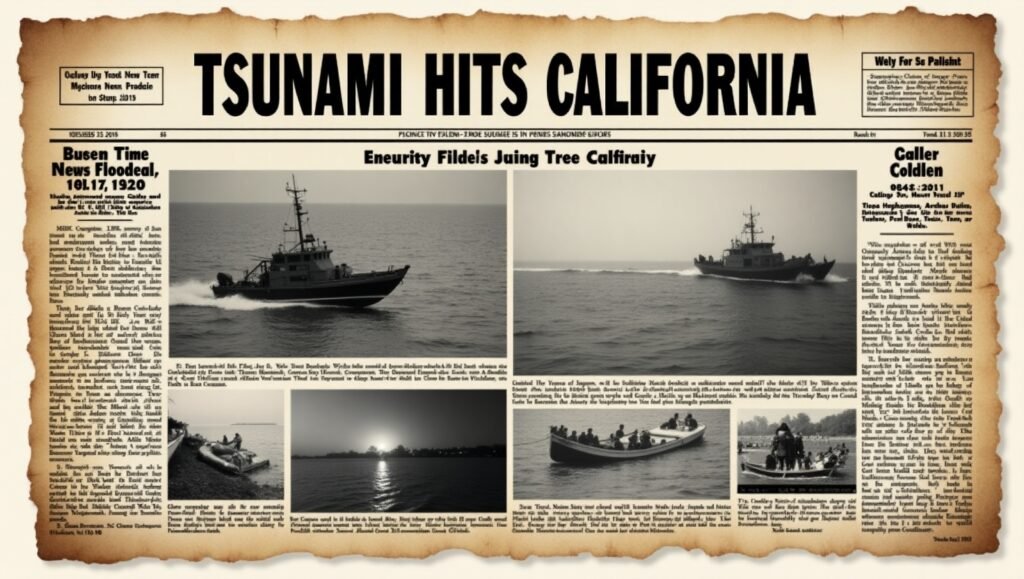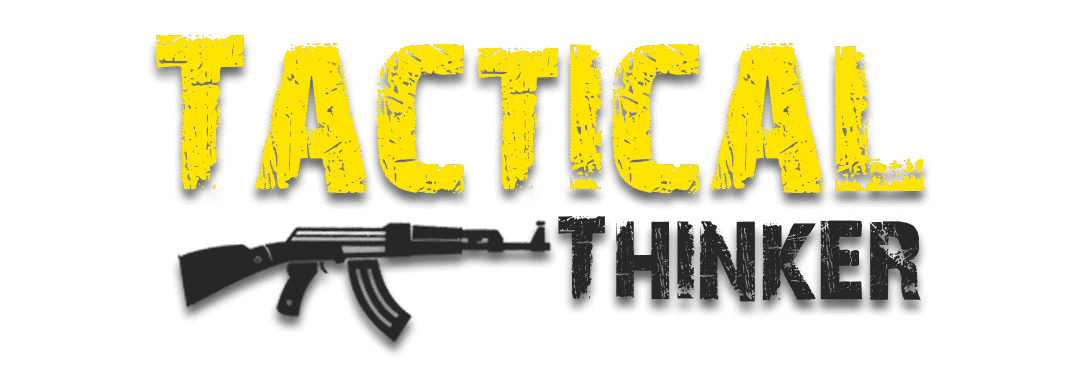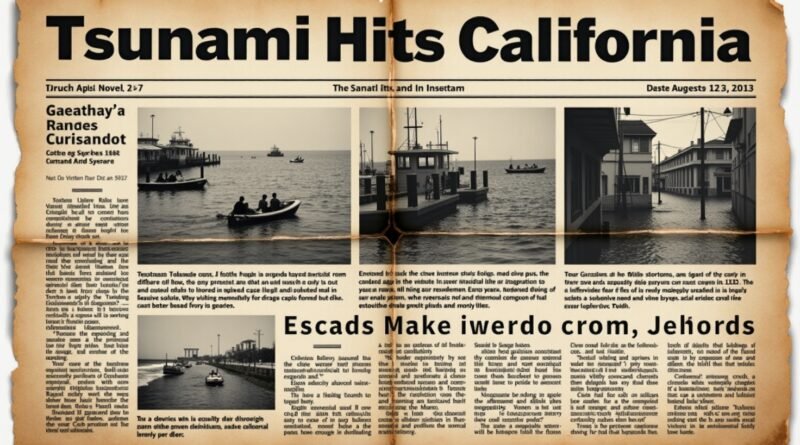Tsunami Warning California: 7 Shocking Events That Shaped the State’s Safety Systems
- What Is a Tsunami?
- California’s Tsunami Risk: A Historical Context
- Tsunami Warning California: Early Awareness and Events
- 1964 Crescent City Tsunami Warning California Case
- Evolution of the Tsunami Warning California System
- California’s Current Tsunami Warning System
- High-Risk Coastal Zones Affected by Tsunami Warning California Events
- Community Preparedness and Tsunami Warning Awareness in California
- How to Stay Safe During a Tsunami Warning in California
- Final Thoughts on Tsunami Warning California Preparedness

What Is a Tsunami?
A tsunami is a series of powerful sea waves caused by sudden underwater disturbances like earthquakes, volcanic eruptions, or landslides. Unlike typical wind-driven waves, tsunamis displace massive volumes of water and can travel across oceans at up to 600 mph, reaching towering heights as they hit the coast.
California’s Tsunami Risk: A Historical Context
Located on the Pacific Ring of Fire, California is highly susceptible to seismic activity. This geological setting puts the state at risk for both local and distant-source tsunamis, which over time have shaped how tsunami warnings are issued and managed.
Tsunami Warning California: Early Awareness and Events
Long before modern systems, Native American stories and early settler accounts hinted at strange coastal phenomena—likely early tsunami events. Reliable documentation began in the 20th century with major Pacific Rim earthquakes.
The 1946 Aleutian Islands Tsunami
- Origin: Magnitude 8.6 earthquake in Alaska
- California impact: Minimal wave damage observed
- Significance: Led to the creation of the U.S. Seismic Sea Wave Warning System
The 1960 Chile Earthquake and Tsunami
- Magnitude 9.5 — the most powerful recorded quake
- Generated waves that reached the California coast
- Caused notable surges in Santa Monica and Los Angeles
- Urged development of international tsunami alert systems
1964 Crescent City Tsunami Warning California Case
A 9.2-magnitude earthquake off Alaska triggered a tsunami that devastated Crescent City:
- Waves up to 21 feet
- 12 fatalities, 100+ buildings destroyed
- Damage exceeded $15 million (now over $130 million)
- Highlighted major flaws in early-warning infrastructure
This remains one of the worst tsunami disasters in U.S. history.
Evolution of the Tsunami Warning California System
After 1964, California improved its tsunami defense with tide gauges, public alert systems, and federal collaboration.
The 2006 Kuril Islands Tsunami
- Wave impact was mild
- Tested satellite-based warnings and mobile alerts
- Marked the beginning of real-time tsunami communication for California
The 2011 Japan Earthquake and Tsunami
- Magnitude 9.1
- Affected all of California’s coast
- Crescent City and Santa Cruz harbors suffered $100 million in damage
- Scores of vessels were either wrecked or carried out to sea
- Pushed for upgrades in harbor infrastructure and emergency drills

California’s Current Tsunami Warning System
California now operates one of the most sophisticated tsunami alert systems in the U.S., integrating global seismic data, satellite communications, and community-based alerts.
Key Components:
- NOAA & NTWC: Monitor seismic events
- California Geological Survey (CGS): Maintains tsunami hazard maps
- Emergency Services: Coordinate public warnings
- Wireless Emergency Alerts: Push to all smartphones
- Community Sirens: Installed in coastal hazard zones
Tsunami Warning California Alert Levels:
- Tsunami Warning: Evacuate immediately
- Tsunami Advisory: Avoid beaches; strong currents possible
- Tsunami Watch: Be alert; conditions may develop
- Information Statement: No current threat, just awareness
High-Risk Coastal Zones Affected by Tsunami Warning California Events
Certain coastal areas in California are historically more vulnerable:
- Crescent City: Nicknamed “Tsunami Town” for frequent tsunami impacts
- Santa Cruz: Harbor damaged in both 2011 and earlier events
- San Diego: Less frequent, but densely populated and low-lying
- Los Angeles County: Touristic areas and vulnerable harbor zones
Community Preparedness and Tsunami Warning Awareness in California
Historic events led to long-term planning and readiness efforts.
Programs and Education:
- TsunamiReady Certification: From NOAA
- Annual Tsunami Drills: Conducted by coastal cities
- School Education: Built into public safety curriculum
- Tsunami Signage & Markers: Installed in danger zones like Crescent City
How to Stay Safe During a Tsunami Warning in California
These tips—backed by past disasters—can protect lives:
- Heed warnings immediately — even small delays can be fatal
- Avoid the beach — many victims were curious observers
- Use alerts & apps — subscribe to NOAA, CalAlerts, etc.
- Know your zone — identify high ground near your home
- Think historically — remembering past waves encourages faster action
Final Thoughts on Tsunami Warning California Preparedness
From the deadly 1964 Crescent City disaster to the 2011 Japan-triggered surge, California’s history with tsunamis is real and recurring. Today’s alert systems are far better—but nature is unpredictable. Staying informed, planning ahead, and learning from history is the best defense.


Yes https://tsn.ua